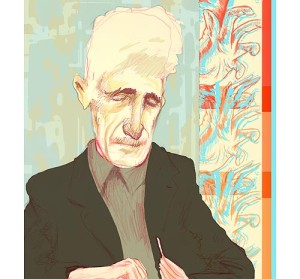There is a beautiful, white and yellow-breasted bird trapped in my office. He keeps flying into the transom, nearly knocking himself unconscious. I opened the door for him to escape, but he doesn’t appear to understand that he needs to fly downwards in order to get free. I suspect it isn’t natural for a trapped bird to fly earthward when frightened.
Last week I read the following from the AP: (MOSCOW) — The pilots of a Boeing 737 that plunged to earth at the Kazan airport, killing all 50 aboard, lost speed in a steep climb then overcompensated and sent the plane into a near-vertical dive, a preliminary report by Russian aviation experts reported Tuesday. The Moscow-based Interstate Aviation Committee… said the plane’s two pilots had failed to make a proper landing approach on the first attempt and then began a second run. They put the plane’s engines on maximum power, raising the plane’s nose up at a sharp angle, causing a quick loss of speed. At the height of about 700 meters (2,200 feet), the crew then tried to gain speed by taking the plane into a dive but hit the ground at a near-vertical angle in a spectacular crash.
There is a critical notion in flying poetically referred to as the region of reverse command (also called “behind the power curve.”) It is a place you can find yourself when, in order to get the airplane to do what you want it to do, you have to do the exact opposite of what you normally do. When we find ourselves out of our comfort zone, we often do what our instincts tell us to do, but doing so can kill us, and as was the case for the Russian pilots, others as well.
Normally, pushing the nose of an airplane up and adding power will make it fly higher. But in the region of reverse command, pushing the nose up and raising the power actually makes the airplane descend. Being behind the power curve happens when certain types of drag exceed power resulting in the loss of that precious commodity called lift. It usually happens when flying slowly. In that case, should you decide you want to climb, you may point your nose up, add power, and end up spinning to the ground.
The solution to being behind the power curve is to do the reverse of what is intuitive, which is to put your nose down and add power, reducing drag. When I was a young psychology trainee in Kentucky, a client of mine had been hospitalized because she was weak and fainted in the cafeteria. She remained in the hospital for three days, refusing to eat. I was fortunate enough to have arrived to visit her at the hospital while a meal (meat loaf) was delivered. The client carried on about how horrible the food was at the hospital, and how she couldn’t eat such lousy food. I had just attended a lecture on paradox in my behavior therapy course, so I proceeded to describe in excruciating detail how horrible the food looked, the conditions in the kitchen where it was made, and what it undoubtedly consisted of (yes, I said it). As I was reciting this she became increasingly agitated. Finally she thrust her fork angrily into the meatloaf and shoved it into her mouth, eating for the first time in nearly a week. I did the opposite of what was intuitive, and what my patient expected as well, and I aligned with her symptom. If she wanted to defy me, just as she did with everyone who tried to get her to eat, she would have to eat.
When I was the CEO of my last company, I told our top administrators that our salaries were getting out of line, and we needed to reduce the average salary we were paying to our staff. Because I didn’t want to be a micro-manager, I didn’t tell them how to reduce salaries, but I gave them the number I wanted to see. When I heard that in order to reduce salaries they instituted a “salary freeze” I was furious, because I knew this would lead to massive discontent. When I expressed dismay, I was asked how else but by instituting a salary freeze could we accomplish our goal. I said that all that needed to be done to reduce average salaries was to hire two additional staff at lower pay rates for every staff member who was given an increase. I don’t think the administrators were incapable of thinking out of the box. They just didn’t realize that even within the box, all you needed to do was to understand that sometimes you can go in one direction and still get to the other.
It is a little bit like the “Chinese finger traps” of childhood, in which you would place one finger in one end and a finger from the other hand in the other end, and no matter how hard you tried you couldn’t pull your fingers out. If you wanted to release your fingers, you had to move them toward each other and not opposite each other in order to loosen the grip.
I left the office to run some errands, and the bird finally found his way out. When we are overly stressed, we revert to what is natural. But when the bird gave up fighting its natural tendencies to fly upwards, and went “in reverse,” it escaped its dire predicament. Like the Chinese finger traps, sometimes we need to relax and go in the direction opposite to our intuition to find our way.


